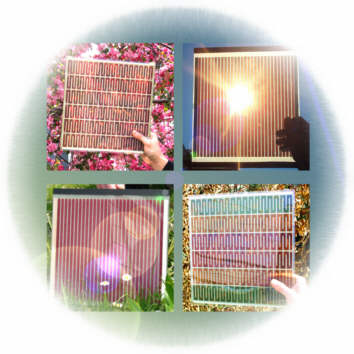
Tuesday I had the chance to visit the Laboratory of Photonics and Interfaces at EPFL. At the invitation of Carole and Michael Grätzel, I toured the lab and learned all about Dye-Sensitized Solar Cells (DSC).
It is absolutely amazing what they are doing; I watched in awe as they showed elementary school children how to power a fan by shining a lamp onto layers of raspberry puree and pencil shavings. This simple process is at the heart of DSC and its implications are tremendous:
1.It doesn’t use silicon so is impervious to price fluctuations and raw material shortages due to the semiconductor industry.
2. The photovoltaic medium is essentially an “ink” that can be “printed” on many different materials. This means that no longer are solar cells relegated to big, ugly, heavy panels. Instead they can be integrated into the windows of your house (transparently), the body of your car, or the fabric of your clothing.
3. The fabrication process is cheap and can leverage the skill/scale of major printers.
4. The cells perform well in diffuse light so you don’t need huge arrays in areas with massive illumination; they work in the rest of the world.
Can you imagine the possibilities? Mobile, wireless power wherever you go. Self-powered houses, office buildings, and vehicles. Cars sitting in parking lots all day becoming net energy suppliers. That’s all still out there a bit but it’s not as far off as you might think. One of the companies that licences the lab’s patents is G24 Innovations and they are already proving the concept. Very exciting!
What other applications can you think of for inexpensive thin-film that performs well in many light conditions?